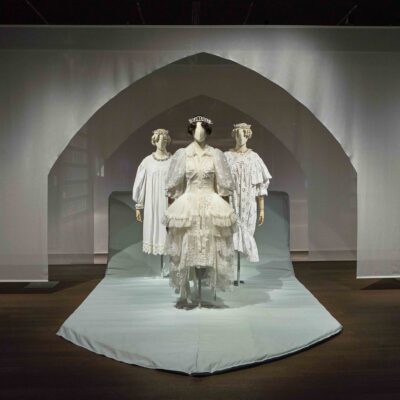
Exhibitions 21.11.2025
01.02.2023
European fashionfashion collectionfashion exhibitionmeeting fashion heritage
While getting ready for its reopening, Portuguese institutions tells its story and vibrant programme
MUDE is a museum dedicated to all expressions of design whose areas of expertise range from fashion to product, graphic, contemporary jewellery, set and costume. Safeguarding its heritage, the museum ensures the best conditions for its several collections’ conservation, research, scanning, exhibition, and internationalization.
As a place where design meets the different aspects of contemporary society and culture, MUDE aims to promote a debate about creation, production, and consumption, concerning some of the urban, socio-economic, technological, and environmental challenges we all currently face in our planet. Multigenerational and transversal to all fringes of society, MUDE addresses all audiences while generating multiple synergies with schools and universities, museums, cultural institutions, companies, and authors.
One of the museum’s main roles is to contribute to a stronger awareness of the urgency to change mentalities and lifestyles, making us more responsible for our individual and collective action to social cohesion and environmental protection. The main goal is to contribute to a more informed, aware, critical and creative public, hence fostering the imperative changes in attitude towards material culture and life.
With the “Francisco Capelo Collection” as its core, acquired by the Lisbon Municipality in 2002, the museum has been increasing and diversifying its collection through donations, acquisitions and deposits, with particular attention to Portuguese design. Regarding the fashion collection, it is worth mentioning, among others, the recent addition of four new collections: “Nuno Baltazar Collection”, “Maria Gambina Collection”, “Storytailors Collection” and “Fashion Travel Collection 1965-1975”. Currently, 152 fashion designers, both national and international, are represented, providing an insight into the fashion culture ever since the 1930s. Equally significant are the incorporation of archives and the creation of a library specialized in design.
The museum building, formerly the Banco Nacional Ultramarino (National and Overseas Bank) headquarters, is currently under refurbishing. The architectural project is based on the museological strategy of considering the building as a living testimony of the architectural culture and construction techniques from the 18th to the 21st century, thus reinforcing the didactic role of the pre-existences so that they become an active element in the experience of the museum. With eight floors and an area of 15000 m2, MUDE’s action will cover areas as diverse as culture, economy, education, environment, arts, technological innovation and social cohesion, with spaces for exhibition, creation, education, debate, research, gathering, and leisure.
While the refurbishing works are taking place, the museum continues to develop its exhibition programme in different spaces throughout the country, under the name MUDE OUTSIDE, aiming to develop a critical theory capable of thinking design in the Portuguese language and culture. One example is the exhibition “PORTUGAL POP. Fashion in Portuguese. 1970-2020”, on show from March to November 2022. Looking at the culture of fashion in Portugal from the eve of the revolution, on April 25th, 1974, to the present day, the curatorial goal was to understand the multiple ways in which Portuguese popular culture, history, heritage, language and collective memory were projected to contemporaneity through fashion, according to the creativity of designers from different generations, backgrounds, and languages.
The exhibition focused on the last 50 years of our recent history and promoted inter-generational meetings, encouraging reflection around categories such as ‘old’ and ‘new’, ‘popular’ and ‘erudite’, ‘rural’ and ‘urban’. It was arranged into three interrelated thematic axes: Collective memory and national identity | Personal territories: intersubjectivity in the 1st person singular | Eco-logical: anthropology of places, matters and knowledge. The important role that many Portuguese artists have granted to constructing their looks on and off-stage, by displaying the stamp of ‘being Portuguese’, was also highlighted with pieces from eight Portuguese pop culture icons — Amália Rodrigues, António Variações, Doce, Heróis do Mar, The Gift, Joana Vasconcelos, Conan Osiris and Cláudia Pascoal.